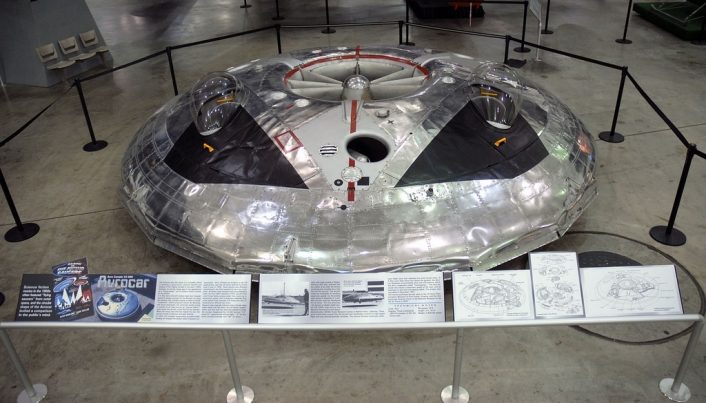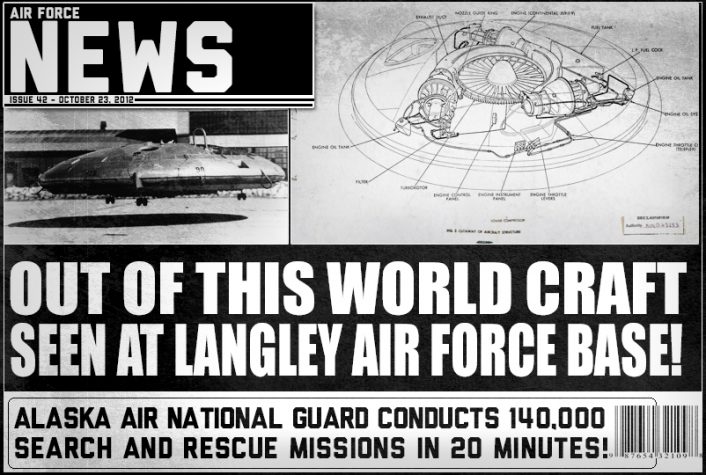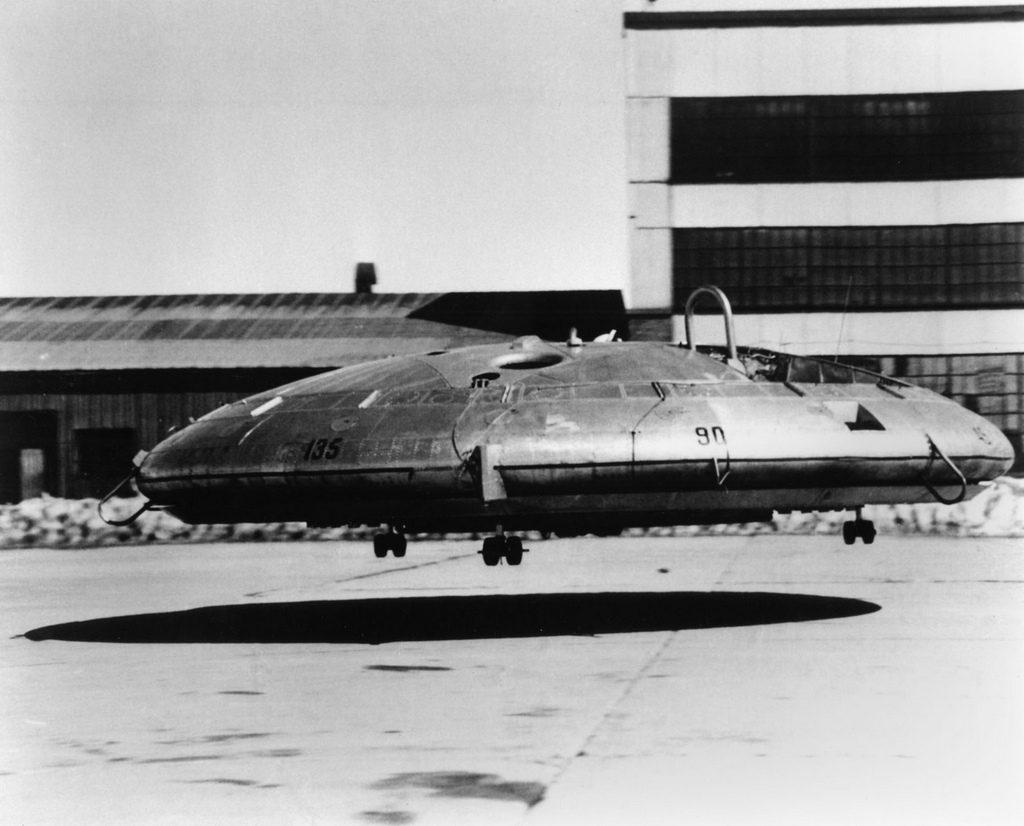You read it well: the U.S. Air Force developed a real Flying Saucer.
Even though newly declassified documents concerning the U.S. flying saucer projects already made the news when they were released by the U.S. National Archives on Oct. 8, 2012, new details about round experimental aircraft have been recently published by the U.S. Air Force.
Information about these Government’s UFOs were available for several years but diagrams included in the most recently disclosed documents relighted general interest around such weird flying machines whose prototypes can be found on display at the National U.S. Air Force Museum at Wright-Patterson Air Force Base, Ohio, and at U.S. Army Transportation Museum at Fort Eustis, Virginia.
The Avro Canada VZ-9AV Avrocar was a 5-foot tall and 18-foot wide flying saucer of the early ’50s when Canada was studying a way to develop a supersonic bomber capable of vertical take off and landing (VTOL). It was a Canadian project owned and controlled by Washington.

Although it was never implemented (because of its cost) the design concept of the prototype featuring exhaust from turbojet engines to drive a circular rotor to create a cushion of air under the aircraft, served as a testing and teaching tool.
According the Air Force, the service was interested in the Avrocar for its VTOL capabilities: it could potentially hover below enemy radars and accelerate to supersonic speed to strike ground targets. The U.S. Army needed a durable and adaptable, all-terrain transport and reconnaissance aircraft to replace their light observation craft and helicopters.
Even if the circular design was believed to satisfy both service’s requirements, it was soon discovered that the flying saucer was unable to perform as predicted.
Here’s why the project was dropped:
Tests with scale models at Wright-Patterson AFB indicated the cushion of air under the Avrocar would become unstable when the aircraft passed roughly three feet off the ground. It was determined the aircraft was not incapable of reaching supersonic speeds, nor would the circular shape of the craft allow the Avrocar to have stealth capabilities. Although the aircraft did not meet the expectations of the Air Force, testing was continued to examine if a suitable model could be developed to fit the Army’s needs.
The first prototype was sent to the National Aeronautics and Space Administration’s Ames Research Center at Moffett Field, Calif. Wind-tunnel tests proved the aircraft had insufficient control for high speed flight and was aerodynamically unstable. Although engineers attempted to perfect the design, the project was marred with problems.
[…]
The second Avrocar prototype underwent flight tests. Project engineers discovered once the craft rose beyond three feet above the ground, it displayed uncontrollable pitch and roll motions. The lack of computer technology and design flaws required pilots to control each engine separately, making it very difficult even for two pilots to properly control.
In December 1961, project leaders discovered the Avrocar could not reach a maximum speed higher than 35 mph. This, along with the crafts other shortcomings, led them to cancel testing permanently.
Meant to operate at supersonic speed, the flying saucer could not fly as fast as a car.
Still, it’s considered a perfect concept, ahead of time. But the technology of that era wasn’t advanced enough for it.
That being said, research made in the ’50 can be found in many current aircraft, like the AV-8B Harrier, V-22 Osprey tilt-rotor aircraft, F-22 Raptor and the F-35B, the first combat plane to combine STOVL (Short Take Off Vertical Landing) and stealth capabilities.













